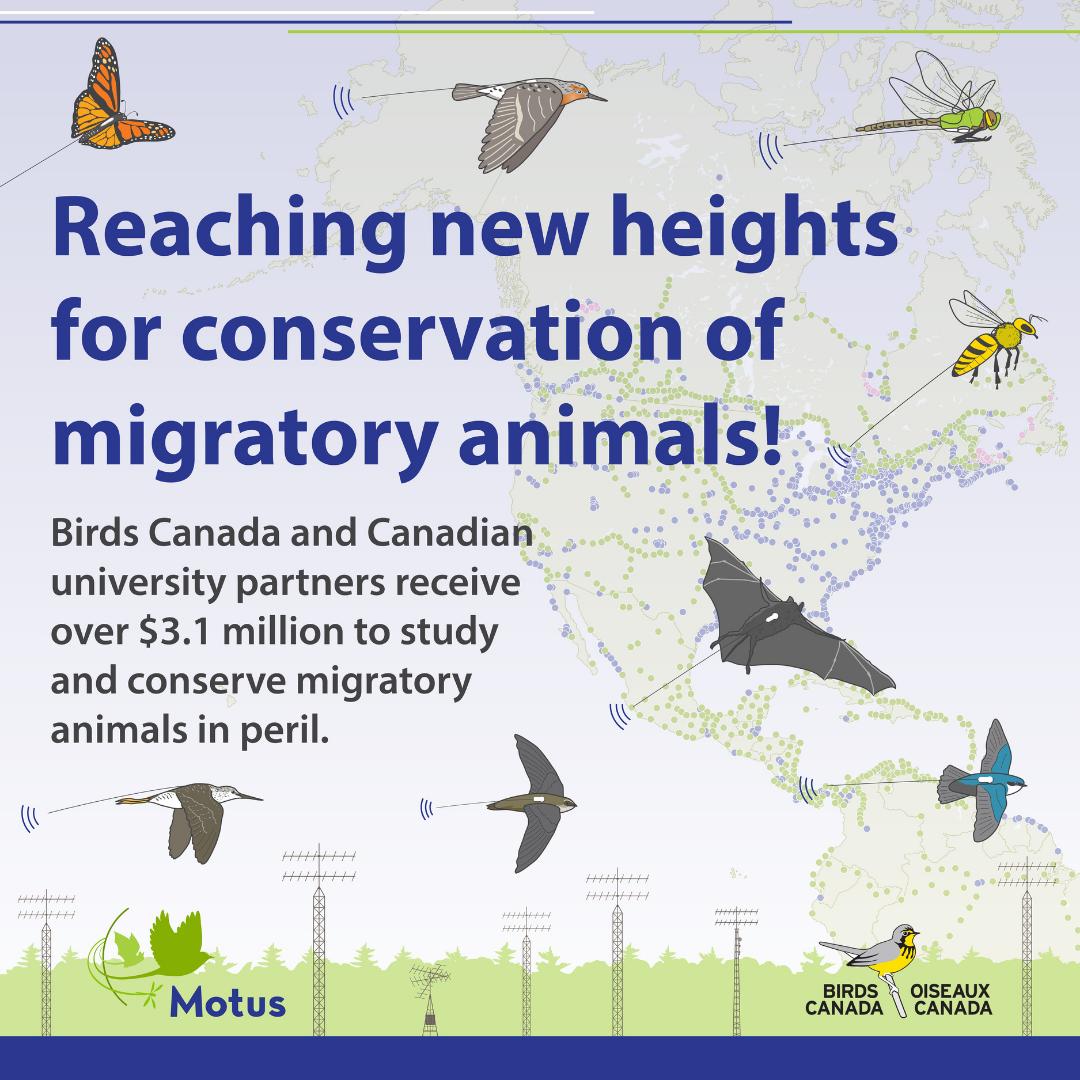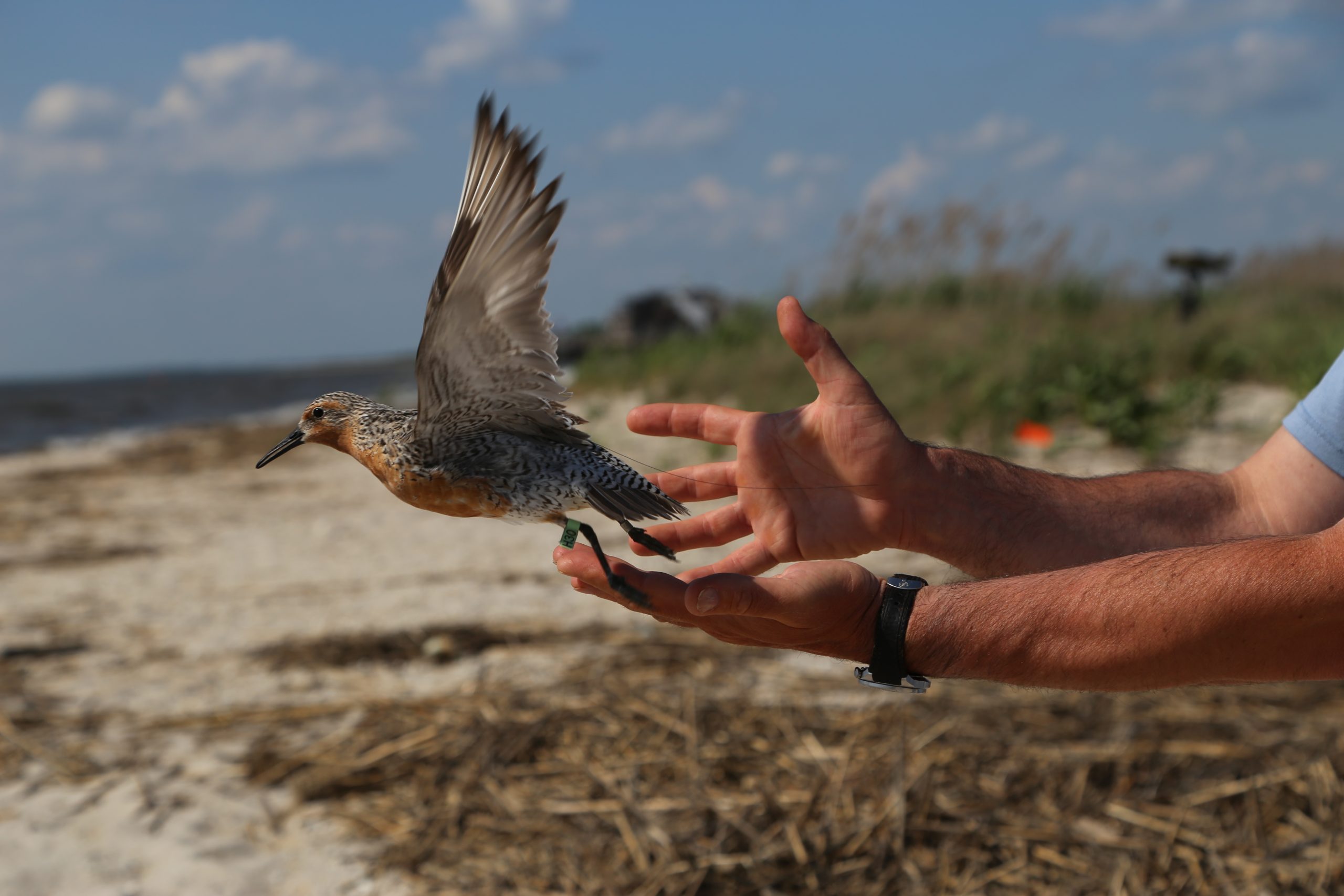
We’ve lost nearly one in three birds in North America since 1970 – that’s almost three billion birds. In Canada, we are experiencing an alarming loss of long-distance migratory birds, especially grassland birds, shorebirds, and some neotropical songbirds. As the biodiversity crisis continues in Canada and around the world, the Motus Wildlife Tracking System (Motus) sparks the leading-edge science necessary to help stem the decline of migratory animals.
On March 13, the Canada Foundation for Innovation (CFI) announced infrastructure funding to support Canada’s leading researchers with an investment over $3.1 million to Motus, a program of Birds Canada in partnership with Canadian universities to study and conserve migratory animals in peril.
The project is being led by a consortium of institutions including Western University, the University of Saskatchewan, the University of Guelph, the University of Waterloo, Acadia University, and Birds Canada.
What is Motus?
Motus, meaning movement, uses automated radio telemetry to study migratory birds, bats, and insects while they are on the move. It enables the smallest animals to be safely tracked over the greatest distances with exceptional precision. Miniature tags transmit valuable information like the location and behaviour of individuals to our receiver stations. This data is provided to researchers all over the world, and made publicly available through motus.org.
Since 2014, the Motus tracking network has grown to over 2,000 collaborators that are operating nearly 2,000 receiving stations in 34 countries, and has enabled researchers to study more than 40,000 individuals of more than 350 species of birds, bats, and insects.
“This funding will be the single greatest expansion of the Motus initiative, filling critical research infrastructure needs across Canada and elsewhere in the hemisphere,” says Stuart Mackenzie, Director of Strategic Assets, Birds Canada. “This will give us the ability to track, and monitor migratory animals throughout their lives ensuring we have more scientific evidence available to inform conservation decisions.”
Understanding Migratory Animals in Motion
Focused on species and places of high conservation concern, this initiative will answer fundamental questions of where and how habitat loss and fragmentation, contaminants, urbanization, and extreme weather impact the survival of wildlife on the move across the Americas.
These funds will also advance associated research across Canada with University partners like Western University and faculty from four other Canadian universities.

A Red Knot is re-released with a Motus tracking tag. Photo: Yves Aubry
“Canada is a very seasonal country because of its high latitude, and a large proportion of its fauna is highly mobile. This project is designed to give us the information needed to understand and conserve our migrant species,” says lead researcher Chris Guglielmo, Western University.
A Global Community of Collaboration
These funds will also support community-based conservation and education, foster collaboration, and inform science-based solutions to halt and reverse the biodiversity crisis. “By harnessing everyone’s collective interests, resources, and data, we can maximize efficacy for conservation and make the greatest difference for migratory animals,” says Mackenzie.
With just a few years left to reach the Global Biodiversity Framework 2030 targets, innovative investments at this level can provide hope and momentum for meaningful conservation action. To learn more, get in touch with Stuart Mackenzie at smackenzie@birdscanada.org
Are you interested in learning more about how Motus is impacting conservation? Take a look at these two scientific papers listed below:
Individual condition, but not fledging phenology, carries over to affect post-fledging survival in a Neotropical migratory songbird
We now have a better understanding of the survival of Barn Swallows after they leave the nest, which is now known to be a period of high mortality and critical bottleneck within their lifecycle. We’ve discovered that only about 40% of swallows in highly cultivated landscapes survive to migrate. Authored by Dean R. Evans, Keith A. Hobson, Jackson W. Kusack, Michael D. Cadman, C. Myles Falconer, Greg W. Mitchell. You can read more about this scientific paper here.
Shade coffee or native forest? Indicators of winter habitat quality for a long-distance migratory bird in the Colombian Andes
In Central and South America, Motus pioneers studying Swainson’s Thrushes discovered that while shade-grown coffee helps migratory birds, there is no substitute for higher value native forest habitat. Authored by Ana M. González, Nicholas J. Bayly, Scott Wilson, Keith A. Hobson. You can read more about this scientific discovery here.
